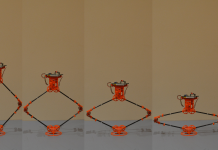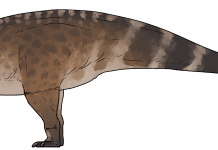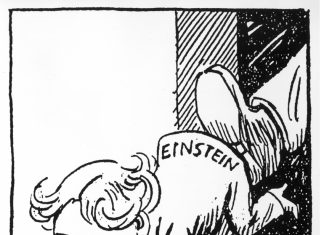Poți rezolva aceste patru ghicitori legate de rotație?
Asistență Veritasium pe Patreon: http://ve42.co/patreon
Testați-vă lista de redare: http://ve42.co/testurself
Mulțumiri imense suporterilor Patreon:
Jeff Straathof, Zach Mueller, Ron Neal, Nathan Hansen
Am dat peste aceste patru puzzle-uri de fizică de-a lungul anilor în discuții cu Neil deGrasse Tyson (ghicitoare 4: care parte(e) dintr-un tren în mișcare se îndreaptă cu spatele față de sol?), Simon Pampena (ghicitoare 2: alergă în jurul unei căi de două ori, prima oară încet, a doua oară mult mai repede, astfel încât media celor două ture să fie de două ori viteza primei ture). Cineva mi-a postat pe Twitter un videoclip cu cilindrul misterios care se rostogolește pe rampă în ghicitoarea 1 (îmi pare rău, nu sunt sigur cine a fost). Ghicitoarea a treia despre o bicicletă care merge înainte sau înapoi atunci când piesa de jos este trasă înapoi mi-a fost adusă de un număr de oameni și apreciez tot ajutorul lor!
Filmat de Raquel Nuno.
Mulțumim tuturor celor de la Palais de la Decouverte! Am acest film de cinci ani și în sfârșit îl lansez acum. Am vrut să vorbesc despre felul în care crește iarba pe o placă rotativă, dar nu am reușit să găsesc materialul…

























riddle 1 answer
i think there is another cylinder or a sphere in the cylinder
because i saw it on action lab shorts
riddle 2 answer
bike will stay where it is if u pull the string exactly horizontally
because pedal makes circle while moving and direction changes at every point in circular motion
so the pedal will not move
english in the riddle 4 flied above my head
but i rewatched it repeatedly just about 93 times now i can answer it
wait a second lemme rewatch it once more
edit:i still don't completely understand it but i guess it is the wheel of the train
V1 ZULUL
I would say:
1-another cylinder
2-the bicycle would go backward and then foreward when you let go
3-V2 has to tend to infinity
4-really don't know
1. A heavy viscus liquid (like slime or honey)
2. Backwards, due to the gear circumference being smaller than the pedal circumference.
3. Infinite? Because the average is the sum of parts divided by the number of parts.
4. The wheels? (Not sure I understood what he was meaning here).
1. There's another cylinder in the cylinder as the outer cylinder rotates down the ramp the inner cylinder rotates opposite and it's moi and inertia creates ahydterisous wave in a downward trend and the longer it rolls it will lessen until it's rotating with the outer cylinder and then the imbalance will lead to a hopping cylinder which would be cool to see.
2. Depending on the friction of the tire it should go forward? You are applying a backwards force which will initially pull it back a small amount due to deformation of the frame backlash in the drive assembly, and the torsional deformation of the tire, but depending on the ratio of mechanical advantage of bike the backwards pull should propel the bike forward. Conversely if it is in a speed reduction range that reduces the mechanical advantage to the ground it will go backwards.
3. You're second lap needs to be run at 3 times the speed of your first lap
4. The bottom half of the wheel. Assuming mag level trains don't become a thing. Or the whole damn thing if it's traveling at an accurate angle opposite the rotation of the earth.
Veritasium, I have a puzzle involving only one principle of basic physics that I would bet that you are unable to solve. No calculations are needed to be done, only a good understanding of this one basic principle of physics. If I win the wager, I ask that you help me contact Marilyn Vos Savant about a very important issue. I should not need to explain who Marilyn Vos Savant is.
I have a feeling that the cylinder stopping has something to do with a magnet, maybe there’s one in the board.
1. No clue.
2. Forward, provided there is enough friction on the ground / not too much skidding. The motion of the pedal is the same as a bike rider pushing it.
3. Infinitely fast: For twice the speed, 2x distance needs to be covered in the time you’ve already spent in doing the first lap.
4. The points in the lower half of the rotating wheel … assuming there is some skidding. Without skidding they move back relative to the train but not the ground.
This is the answer I’m proudly answering after half an hour of thinking.
1. Maybe it’s a sand with some rocks inside it, the sand is why it’s moving slow and the rocks make it stop every now and then.
2. The bike will stay stationary, if you want to pull enough to move the petal and moves the bike forward, accordingly, the string always need to be tight to moves the bike so the bike won’t move due to the reaction force from the string.
3. You would have to move at an infinite speed, if the lap is 1 km and you ran the speed of 1 km/hr, in the first lap you move at the speed of 1 km/hr, so you would need to move at the average speed of 2 km/hr. You can set the equation as 2km/(1+V)hr=2km/hr, where V is the 2nd lap speed.
If you solve the equation, you would need to move across the lap in 0 hours, so the speed is (1/0)km/hr or infinitely fast.
4. The best I can think of is smoke in an old steamed-power train, even if it’s not parts of the train or if it isn’t moving according to ground-level, may the gas diffusion counts.
P.S. I’m also commenting on Youtube so it’s me and not some copycat.